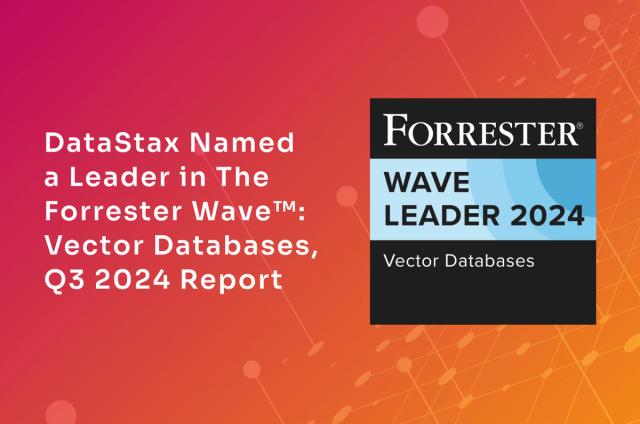Betting on Cassandra, the Database of the Future

It’s been a couple of weeks since the release of Apache Cassandra 4.0, and I get up every morning MORE and MORE excited about it. It was awesome partnering with the Cassandra community, enterprises, and everyone involved in getting GA out the door. This version has been more than three years in the making, and took over 1,000 bug fixes and 200+ people.
Cassandra is a special database, and this was the best release yet. Here’s what sets Cassandra apart and why we remain excited about the possibilities ahead.
Culture of quality
Building complicated software isn’t easy and being an open source project adds even more challenges. There is no one owner or CEO setting goals and inspiring teams to reach the finish line. Most contributors don’t work with each other on a daily basis. So achieving success comes down to passion, collaboration, and true dedication to the project.
What really set the Cassandra community apart on the journey to 4.0 was a relentless commitment to quality. This is rare to find in any software project, let alone in open source. It’s easy to say, “We can fix that after the release.” But the focus on quality in the Cassandra project kept everyone aligned on the most important outcome: being ready for production on the day of release. The community fixed over 1,000 bugs, with some delaying the release by weeks to ensure the version was shipped with NO known issues. This is why we’re calling 4.0 the most stable database ever released. Its performance and reliability are unmatched.
Collaboration
When Cassandra started out in the early days of NoSQL, it was solving a problem that only a few companies had. Today, every enterprise is competing and needs to modernize their data. We need data to be accessible and actionable, but are still faced with challenges of cost and innovation. The Cassandra community is solving these problems together every day by allowing enterprises to manage massive amounts of fast-moving data in a reliable and scalable way. And contributors are creating lasting relationships as a result.
There were 217 contributors to Cassandra 4.0, each with different priorities and backgrounds. All of them were committed to a common goal of building the best database for the community of users, developers, and enterprises. Hundreds of people came together to strive toward something bigger than themselves or their companies. It was about working together as one team – and winning as one team. Now companies like Apple, Netflix, and many others are successfully running 4.0 in production.
The growing ecosystem
I’m really pumped for what's to come. Like REALLY PUMPED. I talk to enterprises—like T-Mobile, The Home Depot, and lots more—that are building and betting their future on Cassandra. They are ready to grow with the foundation of Cassandra and are introducing projects that complement it.
Take Kubernetes, for example. For enterprises on the modernization journey, there's no better place to start than with Cassandra and Kubernetes (or as I like to call them, PB&J, because they go together so well). It’s clear from my conversations with technology leaders that Kubernetes is a very important companion to Cassandra. Why? It allows teams to keep up with the speed requirements of modern software development and helps easily scale applications.
To gain a competitive advantage, enterprises need a NEW approach to defining and implementing their data stacks, leveraging modern cloud, and developer agility. They need an open data stack, built on Cassandra.
It needs to be:
- Kubernetes-based for cloud-native agility
- Developer-ready with APIs to reduce time to market
- Cloud-delivered to simplify operations and reduce TCO
- All built around open source technologies
One of my favorite stories is how The Home Depot launched curbside pickup in less than 30 days. Their in-store traffic had dropped significantly due to COVID, but customer demand remained high. Using Cassandra and DataStax (with an open stack based on Kubernetes), The Home Depot moved fast to curbside service while maintaining scale and reliability. The shift resulted in The Home Depot increasing their 2020 Q2 sales by 100 percent from the previous year. But more importantly, they were able to meet the needs of their customers. This is just one example of what is possible with the power of Cassandra and the open data stack.
DataStax commitment
We live in a connected world where technology drives our decisions, inspires our creativity, and empowers our most important interactions. Everyday experiences like jamming out to Today’s Top Hits on Spotify, binge-watching a new show on Netflix, or calling an Uber to your favorite restaurant are all powered by Cassandra.
Making Cassandra the best choice for modern cloud native apps is a BIG priority at DataStax. We’ll continue our commitment to Apache Cassandra and are excited to work with the project on the next steps of the journey. With innovations like Stargate and K8ssandra, we’re excited to keep expanding the ecosystem around Cassandra while sticking to our open source foundation.
Another HUGE congratulations to everyone who contributed here. I couldn’t be more excited and proud of this community. The end of Cassandra 4.0 development is only the beginning of a bright future for Cassandra. I can’t wait to see how far we will go.




